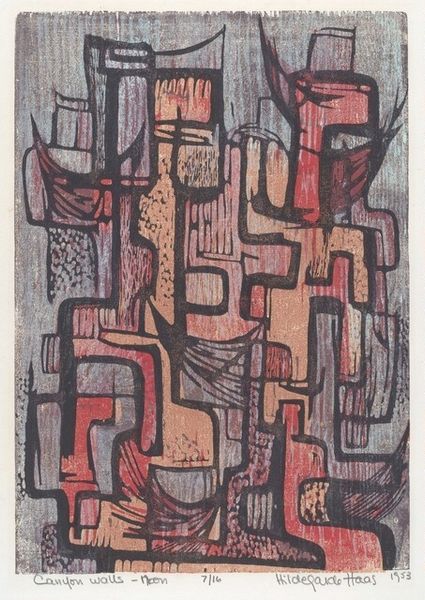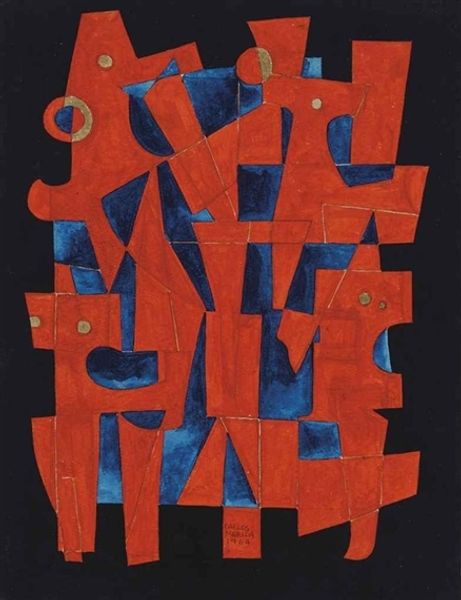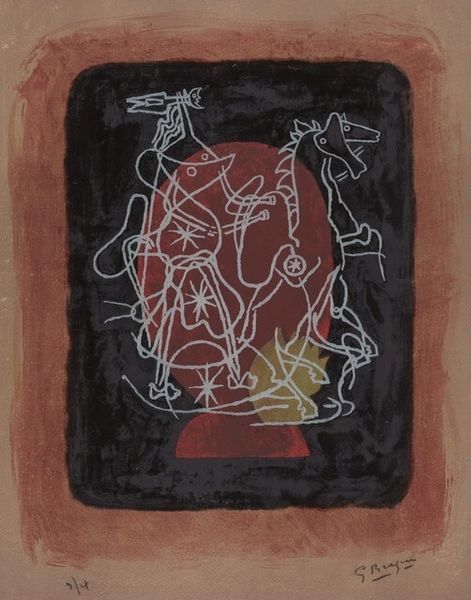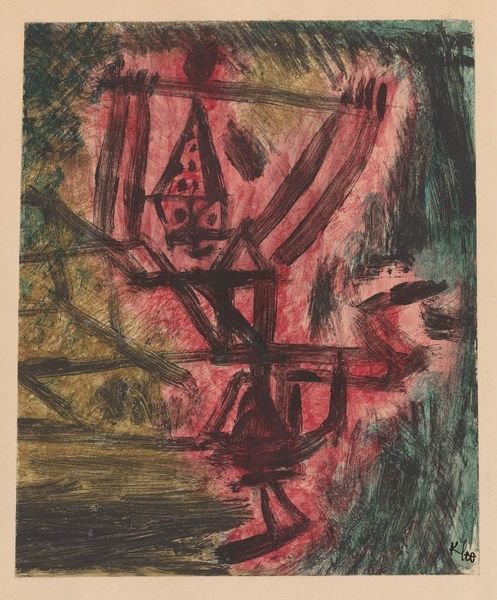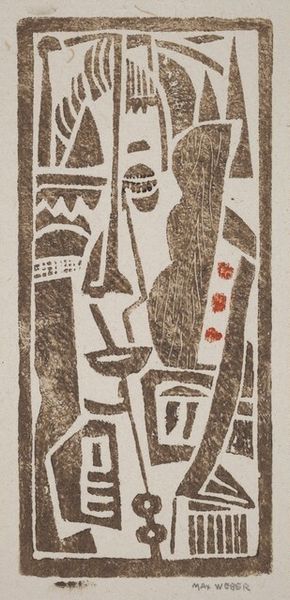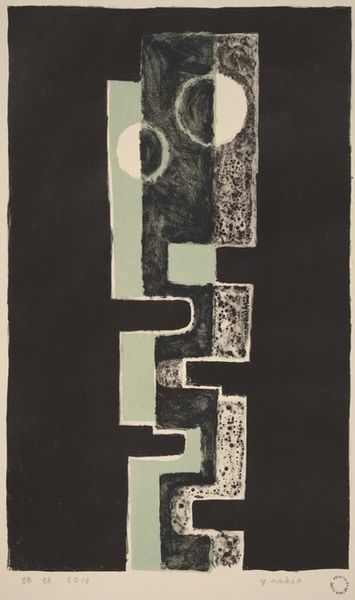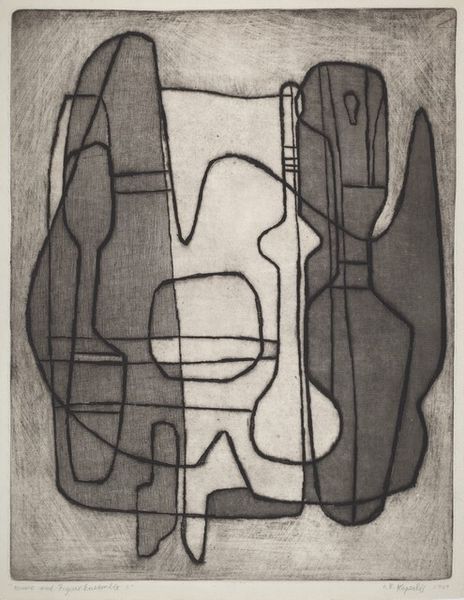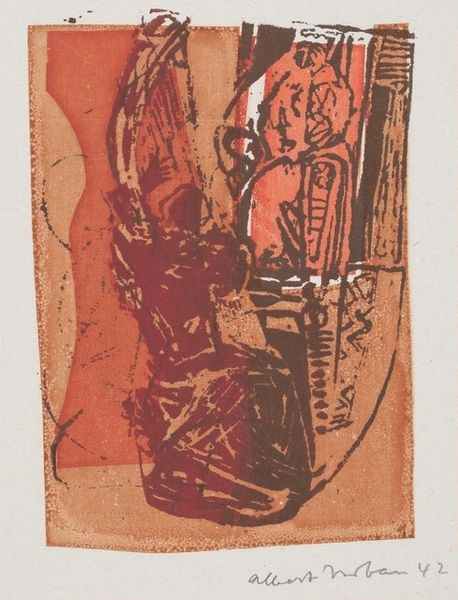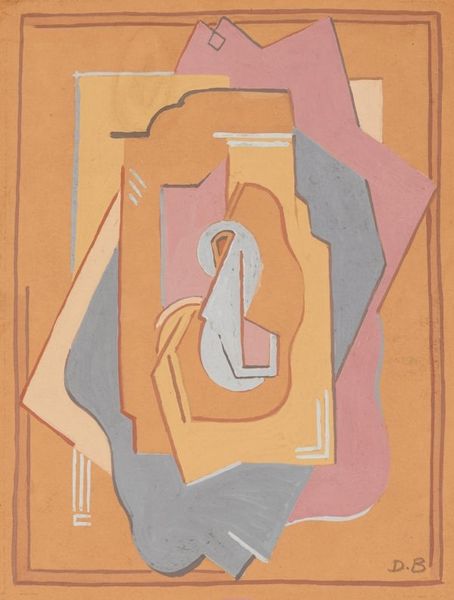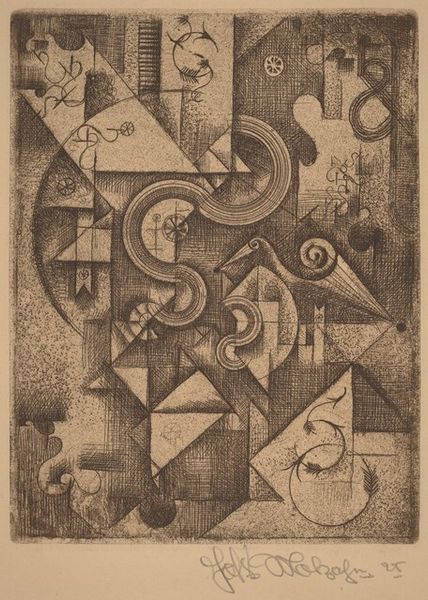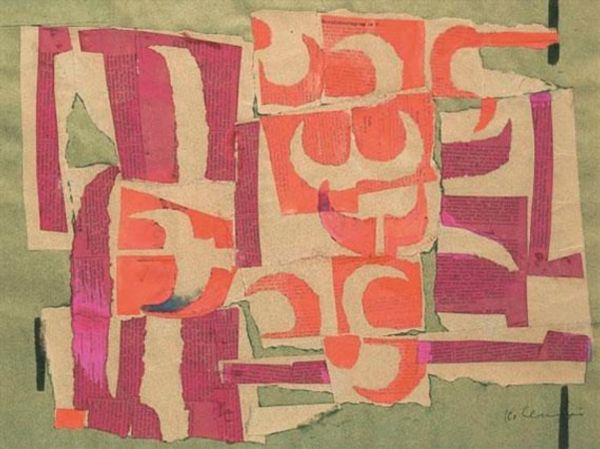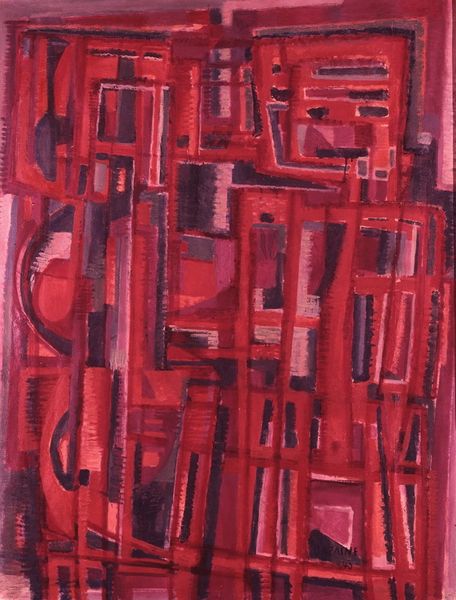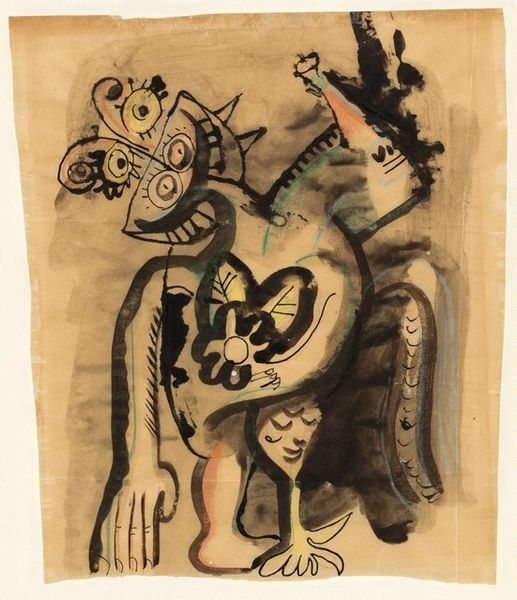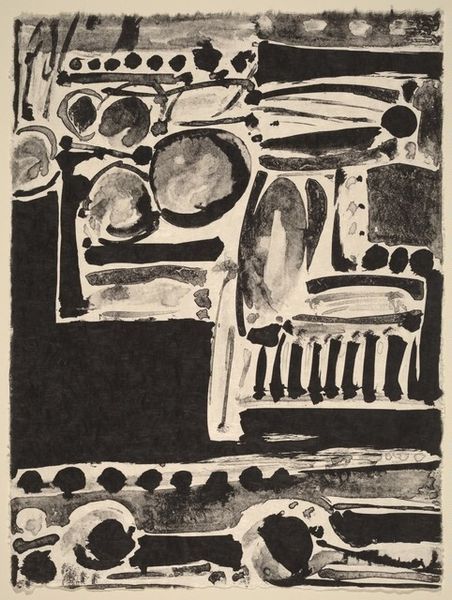
#
portrait
# print
#
geometric
#
abstraction
#
line
Dimensions: Image: 309 x 233 mm Sheet: 358 x 318 mm
Copyright: National Gallery of Art: CC0 1.0
Curator: Here we have Herman Graff’s “Portrait of a Woman,” a 1951 print. What are your initial impressions? Editor: My first impression is unsettling. The fiery red ground amplifies the sense of fragmentation and perhaps anxiety conveyed through the geometric abstraction. It feels primal somehow, a mask perhaps? Curator: It's fascinating you use the word "mask," given the period this work was created. In the post-war era, artists grappled with portraying the self in the context of immense societal upheaval and loss. Graff, I think, presents a very raw vision of a person fractured, but ultimately present, perhaps indicative of trauma. Editor: I can see that. The lines forming the facial features feel almost totemic, harking back to older iconographies. That open mouth, for example - is it a scream or a song? Are the eyes conveying fear or surprise? It’s compelling that it could be both simultaneously, expressing a certain cultural anxiety present throughout modern history. Curator: Absolutely. There’s a tension. Is Graff speaking to the political climate of the Cold War era? Perhaps. More likely I would argue is he showing a private and internal torment. Remember, in this era Abstract Expressionism had gained dominance and many artists were looking for universal emotions rather than political causes to focus their efforts and creative energy upon. Editor: Still, there's a universality to symbols, transcending specific historical contexts. This “woman” echoes ancient earth mother goddesses, a source of power as well as potential suffering. The severe reduction into line hints at something more ancient underlying, more basic underlying contemporary anxieties of identity and personhood. Curator: It’s undeniable that Graff captures a raw, enduring sense of human experience in this print, no matter if it's more specific to its time or universal through the ages. Editor: Indeed, it reminds us that portraiture can reveal hidden facets of identity, both personal and collective. Thank you, it was enlightening to examine this print.
Comments
No comments
Be the first to comment and join the conversation on the ultimate creative platform.
